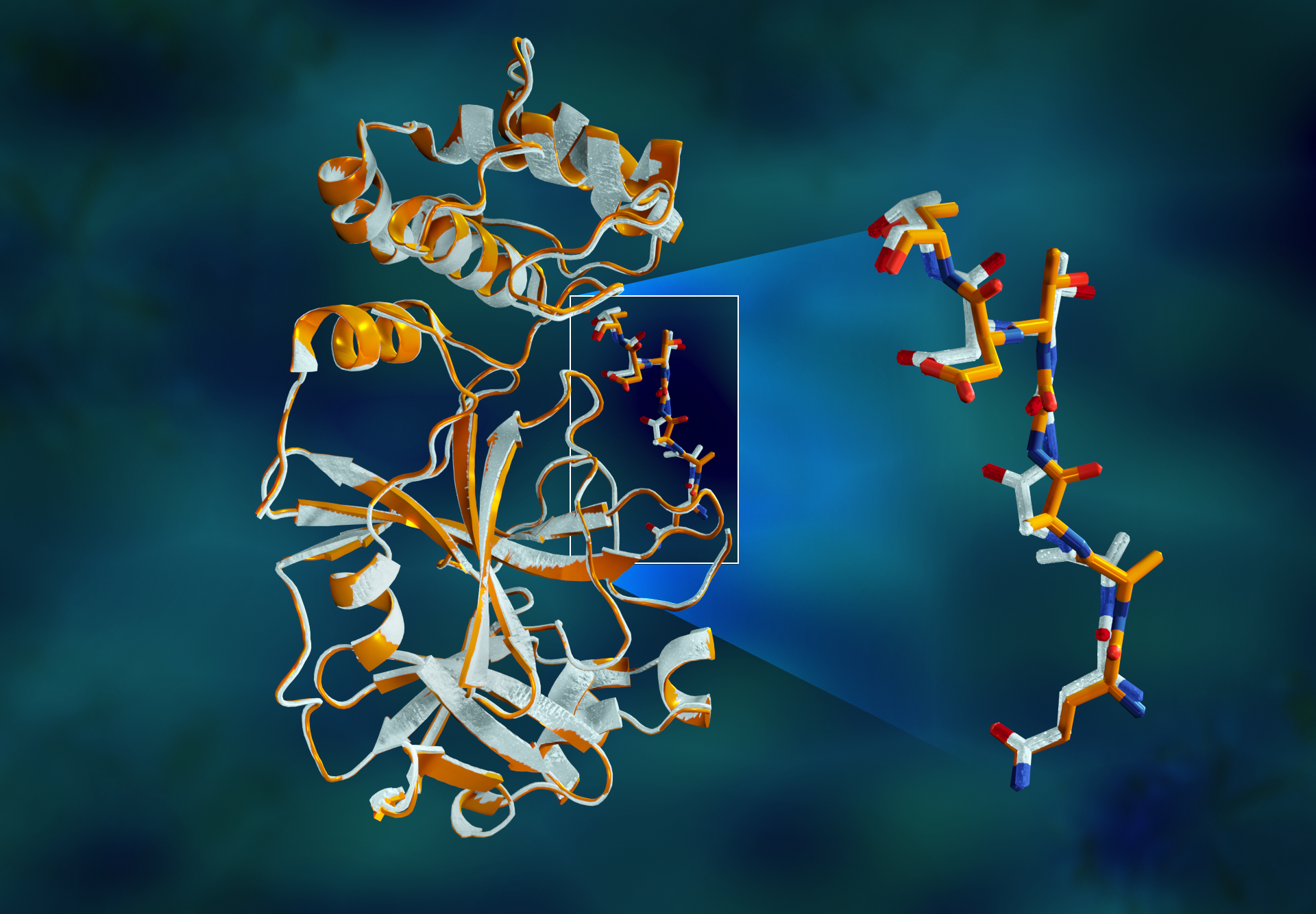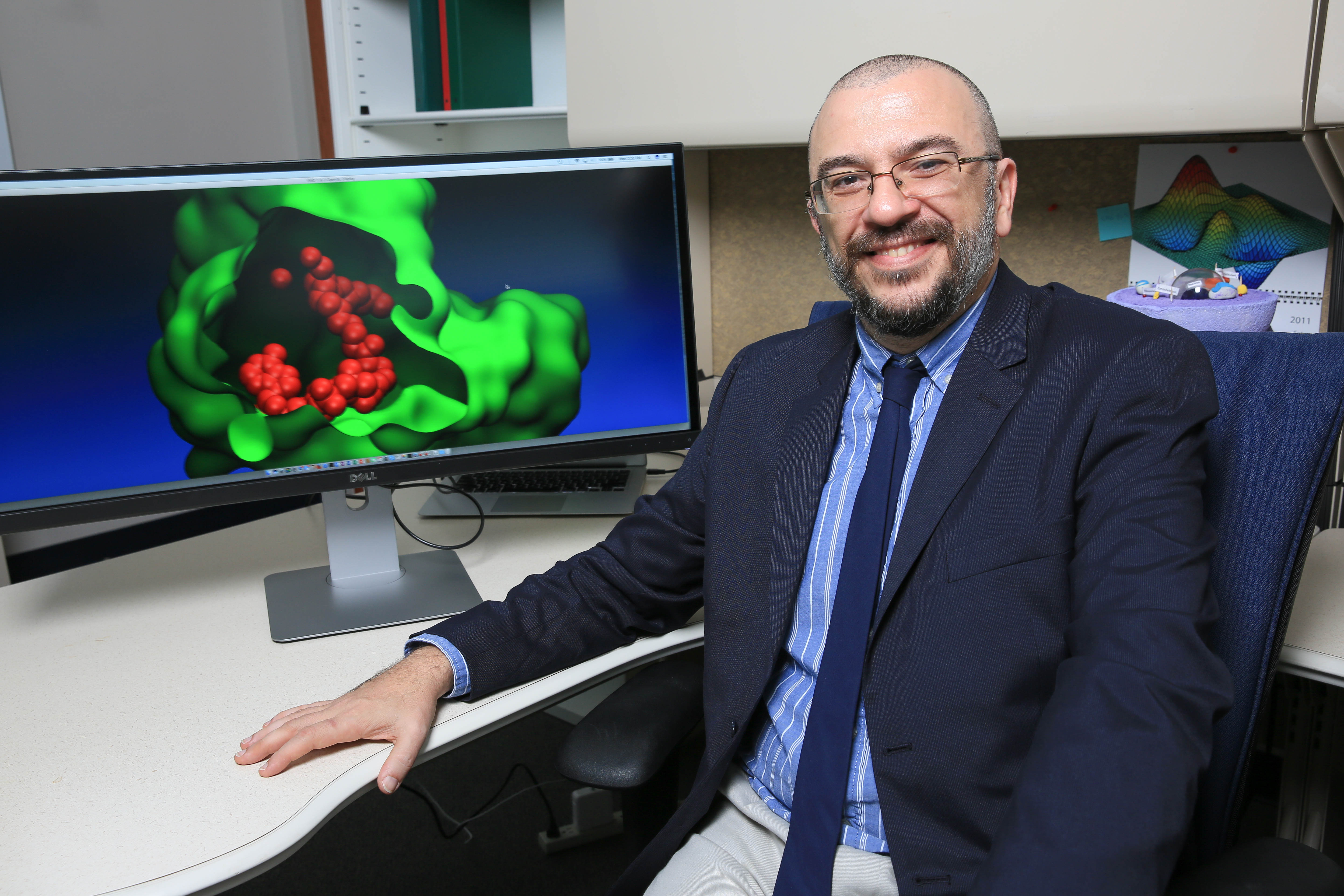Cicada’s cries ring out in the hot air and their discarded exoskeletons decorate tree branches in the southeast and midwest United States at the height of summer. While their ability to emerge in huge numbers is astounding, they have other surprising features too. In fact, their wings kill bacteria on contact and are self-cleaning. Researchers using the Department of Energy’s (DOE) Oak Ridge National Laboratory and Brookhaven National Laboratory user facilities investigated this bizarre phenomenon. They learned how structures in the cells are able to pull off such a feat and how it could be used in medical applications.
Tag: Summit supercomputer
Lab experiments support COVID-19 bradykinin storm theory
A new paper published in Nature Communications adds further evidence to the bradykinin storm theory of COVID-19’s viral pathogenesis — a theory that was posited two years ago by a team of researchers at the Department of Energy’s Oak Ridge National Laboratory.

Four Decades of Advancing Computing for Discovery
Forty years of the Office of Science’s investments in applied mathematics and computational sciences are paying off in world-class infrastructure and research, as described in the ASCR@40 report.

X-rays size up protein structure at the ‘heart’ of COVID-19 virus
Researchers have performed the first room temperature X-ray measurements on the SARS-CoV-2 main protease—the enzyme that enables the virus to reproduce. It marks an important first step in the ultimate goal of building a comprehensive 3D model of the enzymatic protein that will be used to advance supercomputing simulations aimed at finding drug inhibitors to block the virus’s replication mechanism and help end the COVID-19 pandemic.

UAH joins supercomputing effort to find drugs effective against COVID-19
A professor in the Department of Biological Sciences at The University of Alabama in Huntsville (UAH) is part of an effort led by Oak Ridge National Laboratory (ORNL) in Tennessee that applies the power of supercomputers to screen compounds for effectiveness against the pandemic COVID-19 virus.
Early research on existing drug compounds via supercomputing could combat coronavirus
Researchers at the Department of Energy’s Oak Ridge National Laboratory have used Summit, the world’s most powerful and smartest supercomputer, to identify 77 small-molecule drug compounds that might warrant further study in the fight against the SARS-CoV-2 coronavirus, which is responsible for the COVID-19 disease outbreak.
Closely spaced hydrogen atoms could facilitate superconductivity in ambient conditions
An international team of researchers has discovered the hydrogen atoms in a metal hydride material are much more tightly spaced than had been predicted for decades—a feature that could possibly facilitate superconductivity at or near room temperature and pressure. The scientists conducted neutron scattering experiments at the Department of Energy’s Oak Ridge National Laboratory on samples of zirconium vanadium hydride.

Gordon Bell Finalist Team Tackles Transistors with New Programming Paradigm
A team simulated a 10,000-atom 2D transistor slice on the Summit supercomputer and mapped where heat is produced in a single transistor. Using a new data-centric version of the OMEN nanodevice simulator, the team sustained the code at 85.45 petaflops and earned a Gordon Bell Prize finalist nomination.